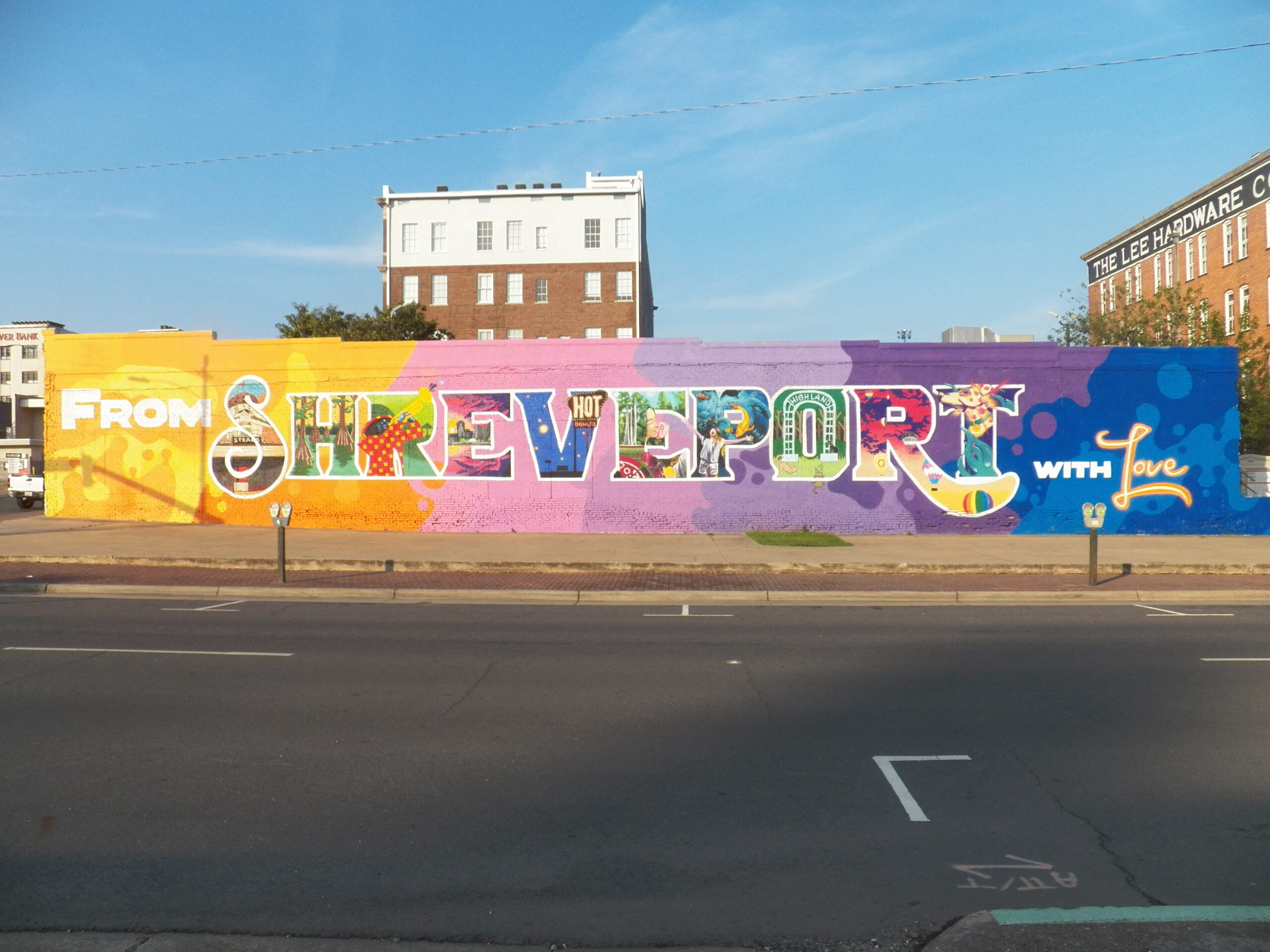




















































































I had ridden to Shreveport with someone else, and although I wanted to eat at Orleandeaux’s now that it had opened in the old Smith’s Cross Lake Inn building on Cross Lake, my traveling companion did not, so we drove along the lakeshore for awhile, but did not eat there. He wanted to go back to the casinos for the evening, which left me with an hour or so to walk around downtown Shreveport, which I found somewhat shocking to say the least.
Local Shreveport people suggest that downtown is unsafe, particularly in the evenings, but as I walked Texas Street and other downtown streets, I had to wonder who would pose a threat. I saw almost nobody as I walked the eerily empty streets at 6 PM; perhaps a visitor might get mugged by a ghost, but one would be hard-pressed to find any other human beings. I found it a rather sad place, with so many historic but empty buildings, many of them reflecting the logos and names of stores which closed years ago, the old signs reflecting the fact that the buildings have never been repurposed or redeveloped. That I could stand in the center of the city’s most important street to take a photograph and have not one vehicle pass me in either direction should suffice to demonstrate how strangely empty things were.
Shreveport has had two modern entertainment districts in its recent history; the ruins of both adjoin the Texas Street Bridge. Shreve Square had begun in 1973 as an effort to bring live music and entertainment to the downtown area. Early complaints centered on dress codes that seemed designed to discourage Black patronage. One establishment, the Sports Page, flat out turned Blacks away at the door at times. By the late 1980s, Shreve Square had largely failed. Unstable buildings and mysterious fires finished it off. Under the bridge itself are the ruins of a more recent entertainment district, the Red River District. Designed by John Elkington, the designer of Memphis’ Beale Street, the Red River District initially attracted large crowds, as many as 20,000 on a few Saturday nights. As early crowds were predominantly African-American, the city began efforts to curb the crowds, employing police on horseback and eventually imposing a $10 cover charge, which quickly eliminated the crowds. Without the crowds, the bars and restaurants were soon gone as well. Today, the area is almost completely vacant; one or two spaces are occupied; the former restaurant patios occasionally become sleeping places for homeless people.
Memphis’ downtown has problems, but it is never as empty as Shreveport’s on any night of the week, and Memphis does not have casinos. It would seem that Shreveport lacks people with the necessary funding or visions to turn the downtown into the kind of place that people would want to visit. At present, Shreveport really has no entertainment district at all, and I suppose that people go to Bossier City and the Riverwalk. It is a tragedy, because Shreveport’s downtown is historic, and there is plenty of potential. But someone will have to step up and create a comprehensive plan to bring it back.


It’s like one of the many forgotten Delta towns…writ large.